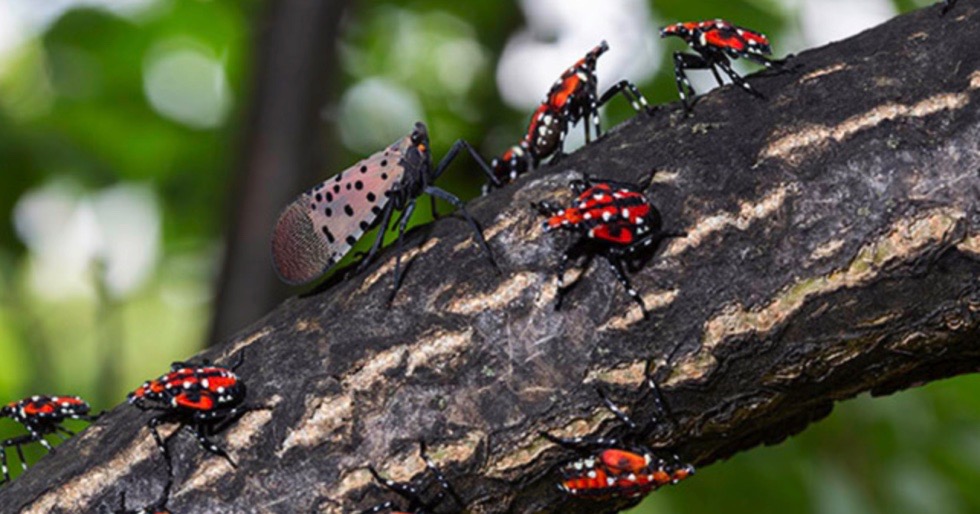“Any foolish boy can stamp on a bug.”*
By: Alison Zak
I saw my first spotted lanternfly recently. The insect flew onto another woman’s leg where I saw it alive on her bare skin. Then she knocked it to the ground as her child asked, “Can I squash it?”
I heard the stomp.
Spotted lanternflies are destructive here in the U.S.; there’s no doubt about it. The USDA warns of severe threats to a variety of fruit harvests. Vineyards in parts of Pennsylvania, for example, are already losing crops to the lanternflies at alarming rates. The damage they cause could cost many millions of dollars. But the individual I saw on the woman’s leg was also a fellow being living the only life it knew, flying around the Berryville fairgrounds at a wildlife event where the contrast of the festival attendees’ passion for native wildlife and contempt for the nonnative lanternflies was fascinating to witness.
Thank goodness for diffusion of responsibility! I fear the day when I come face-to-face with a lanternfly alone, for I don’t welcome the burden of that decision. I consider myself neither a squasher nor a sympathizer, as profiled in the New York Times’ recent article “In the Lanternfly War, Some Take the Bug’s Side.” The space in which I exist is as gray, gray, gray as the wings of the adult lanternfly beneath black spots.
As a conservationist with concern for species and individuals alike, I often face such contradictions in my work. In June 2021, I founded a nonprofit organization called the Human-Beaver Coexistence Fund that provides information and financial support for the implementation of nonlethal beaver management strategies in the Mid-Atlantic. For example, we promote alternatives to lethal trapping such as flow device (often called ‘beaver deceiver’) installations to address beaver-caused flooding. I regularly spend interactions with landowners discussing how beavers matter to them and to their communities (by providing cleaner water, more drought/flood/wildfire resistant landscapes, greater biodiversity, etc.) while simultaneously knowing in my heart that beavers matter regardless of their usefulness to humans. I believe strongly in the inherent value of beavers and other wildlife but do not approach it that way in my work, because I recognize that if I appeal to my own values and beliefs before those of the people with whom we collaborate that we will not achieve our mission. And this is OK.
In the end, it’s not the trapping of beavers or the stomping of lanternflies that bothers me the most. It’s the callousness with which we engage in these behaviors: the apparent disregard for other lives as we thoughtlessly or even triumphantly kill other beings, the way the words we use to talk about certain species and their movements across shared landscapes are flavored with elements of hatred and violence. Invasive. Nuisance. Pest. Beaver infestation. Lanternfly war.
Some people who consider themselves conservation heroes boast about ‘body counts’ in reference to how many lanternflies they’ve smushed, even though the effectiveness of this approach has been called into question. One research team estimates that 35 percent of all spotted lanternflies in the U.S. would have to be individually killed to account for the species population growth rate, suggesting that all that stomping is unlikely to make a significant impact. There are also concerns about untrained members of the public killing native critters that are similar in appearance to the spotted lanternflies. Perhaps all this sudden public support for a conservation issue could be redirected in more productive ways.
So, would I stomp a lanternfly? I’m not sure, but I do know that I will not feel gleeful or proud if my shoe hits the ground. In fact, the stomping itself matters less than the personal reflection on my relationship to a fellow creature and my nuanced grappling with the decision to take another’s life. I don’t have the answers. I ask hard questions and reassure others and myself that pondering these uncertainties and inconsistencies is not an unproductive part of our jobs.
The mission of the conservation nonprofit OneNature, which I wholeheartedly support, is to promote well-being for all beings. This is a messy yet worthwhile endeavor. To take the well-being of ourselves, our communities, and other species seriously—all beings and ecosystems–we should become comfortable in these contradictions that accompany our conservation work. It is not easy. But if we agree to do it together, we will not be alone in the challenge.
***
Alison Zak is an author, yoga teacher, anthropologist, and animal. She lives in northern Virginia with her husband Vishu, Meeko the dog, and Monkey and Gus the adopted budgies. In addition to her writing and spiritual practices, Alison runs the Human-Beaver Coexistence Fund and regrets that there is no yoga pose named after the incredible ecosystem engineer, the beaver. This essay originally appeared on the OneNature blog on Oct. 12, 2022 under the headline “Holding Space for Contradiction in Conservation.” OneNature works to advance the interconnection of nature, wildlife, and human well-being so animals, people, and the planet can thrive. You can learn more about OneNature here. You can find out more about Alison at www.alisonzak.com and follow her on Twitter and Instagram @animal_asana. Her book Wild Asana can be purchased at https://www.northatlanticbooks.com/shop/wild-asana/.
*“Any foolish boy can stamp on a beetle, but all the professors in the world cannot make a beetle.” –Arthur Schopenhauer


